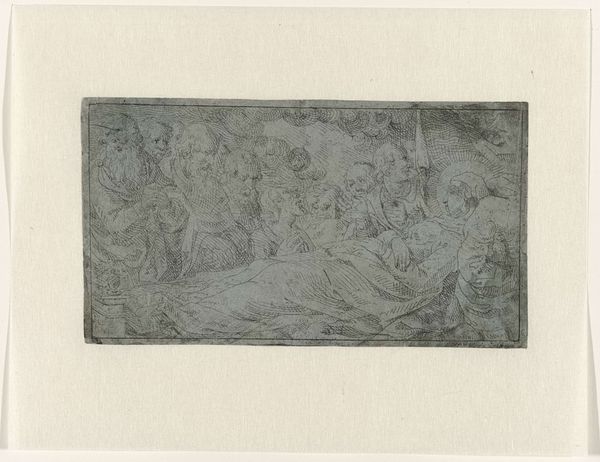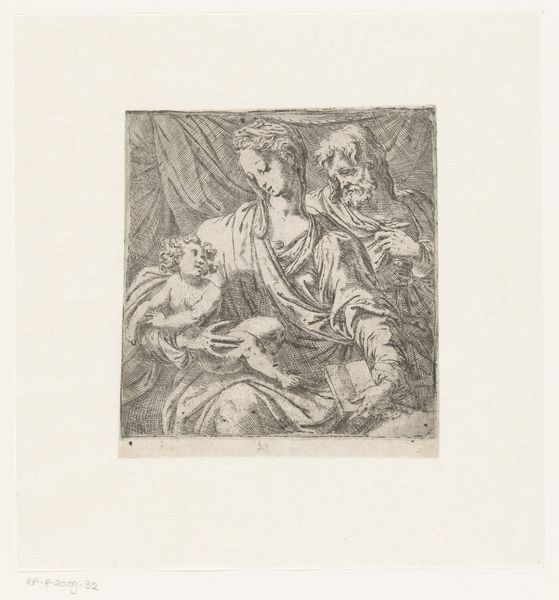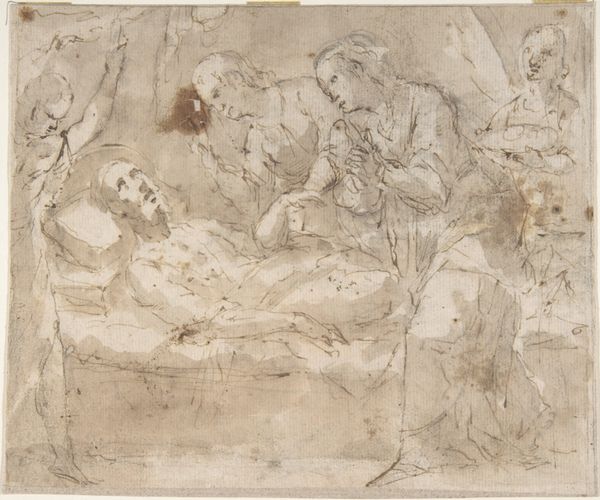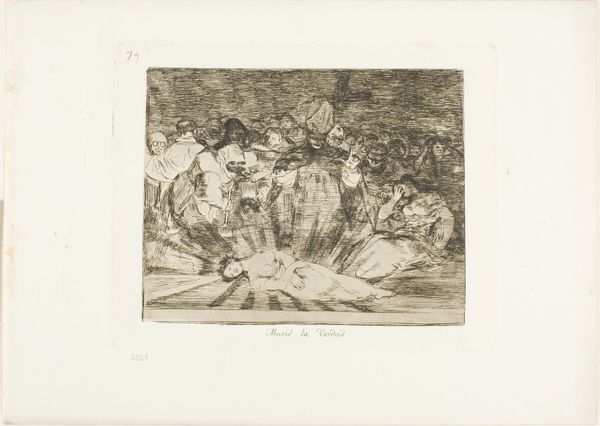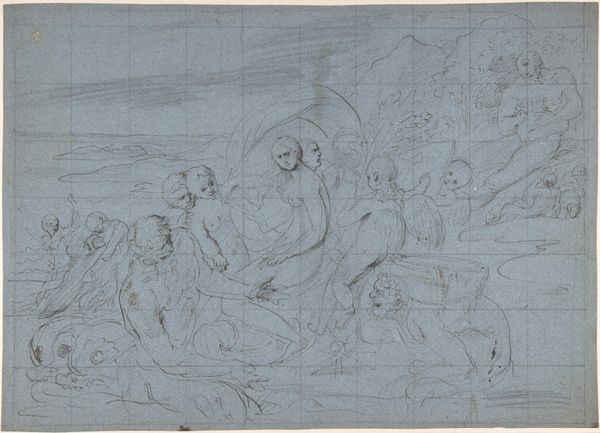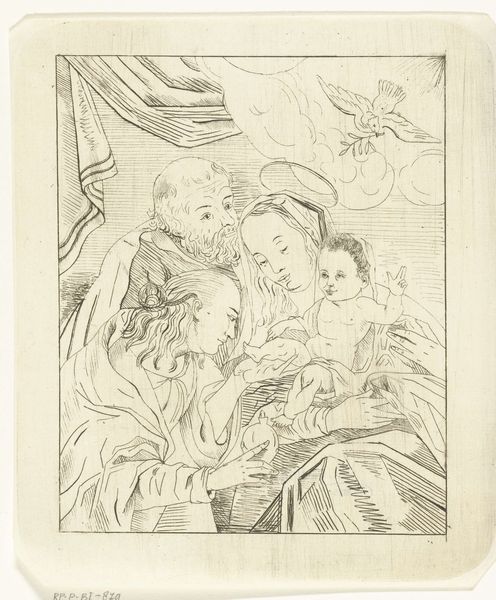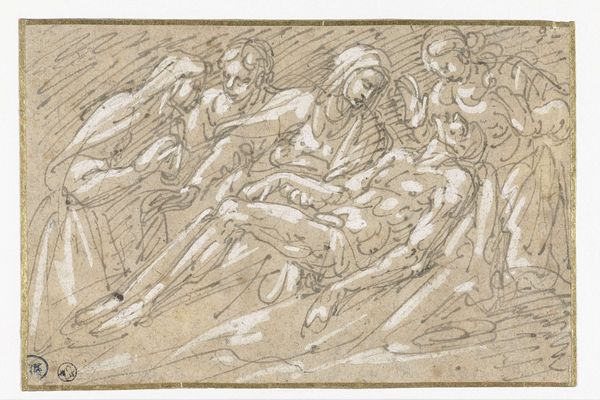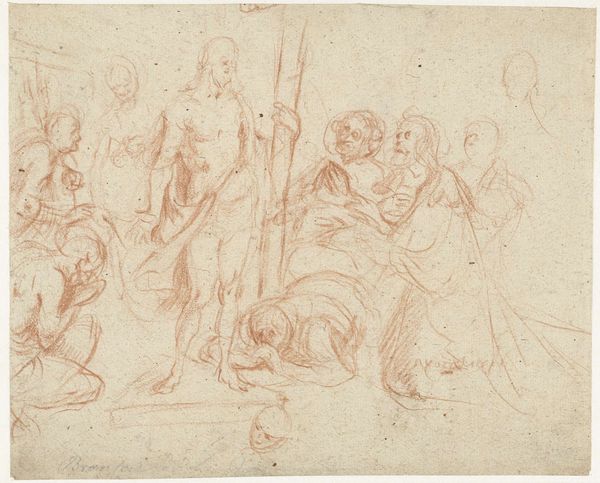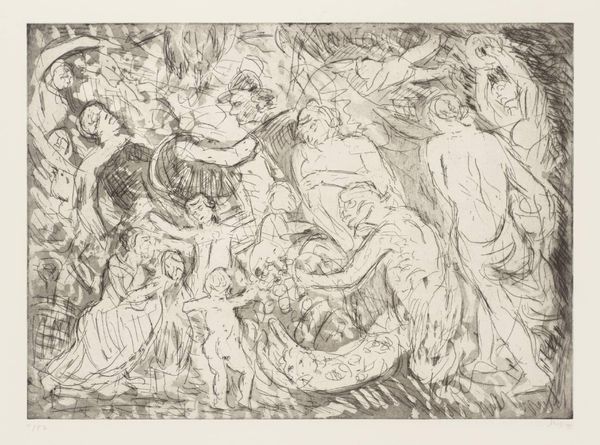
drawing, paper, ink, pen
#
photo of handprinted image
#
drawing
#
light pencil work
#
ink paper printed
#
pencil sketch
#
incomplete sketchy
#
figuration
#
paper
#
ink
#
ink drawing experimentation
#
pen-ink sketch
#
sketchbook drawing
#
pen
#
pencil work
#
history-painting
#
northern-renaissance
#
sketchbook art
Dimensions: height 96 mm, width 172 mm
Copyright: Rijks Museum: Open Domain
Editor: Here we have Pieter Feddes van Harlingen's "The Dead Christ with Mary and Mourning Disciples," an ink drawing from 1612. It's currently held at the Rijksmuseum. The figures are so delicately rendered, but there’s a real starkness to the scene that leaves a somber impression. How do you interpret this work, particularly regarding the symbolic weight of its imagery? Curator: Indeed, this image reverberates with profound historical and religious significance. The Deposition is a pivotal moment, a kind of iconographic shorthand for grief and redemption. Observe the carefully placed halo above Christ. Consider how this convention transcends individual depictions; it represents divine presence and spiritual authority passed down through time. It signals not just an individual, but a legacy. Does the arrangement of figures—Mary's proximity to Christ, for instance—suggest any specific cultural memory or ritual? Editor: I noticed the positioning. Mary, cradling Christ, is such a familiar motif, almost primal. And the halo, as you say, connects it to centuries of religious art. What about the other figures; are their expressions or gestures meant to convey something specific? Curator: Absolutely. Notice their varied expressions, ranging from quiet contemplation to outward displays of sorrow. This variation invites viewers to personally identify with the scene. And what about the chalice held by one of the figures? Editor: Perhaps referencing the Eucharist, the blood of Christ? It certainly adds another layer. Curator: Precisely! That visual echo binds the narrative to an ongoing tradition. So much of what we perceive is based on a continuity of understanding. The artist taps into that deep well. I find it compelling how van Harlingen balances established iconography with his unique artistic vision. Editor: It’s fascinating to consider how artists use these shared symbols to evoke such powerful and lasting emotions across different eras. It makes me realize how much richer the viewing experience becomes when we consider not just what we see, but also what we remember.
Comments
No comments
Be the first to comment and join the conversation on the ultimate creative platform.
